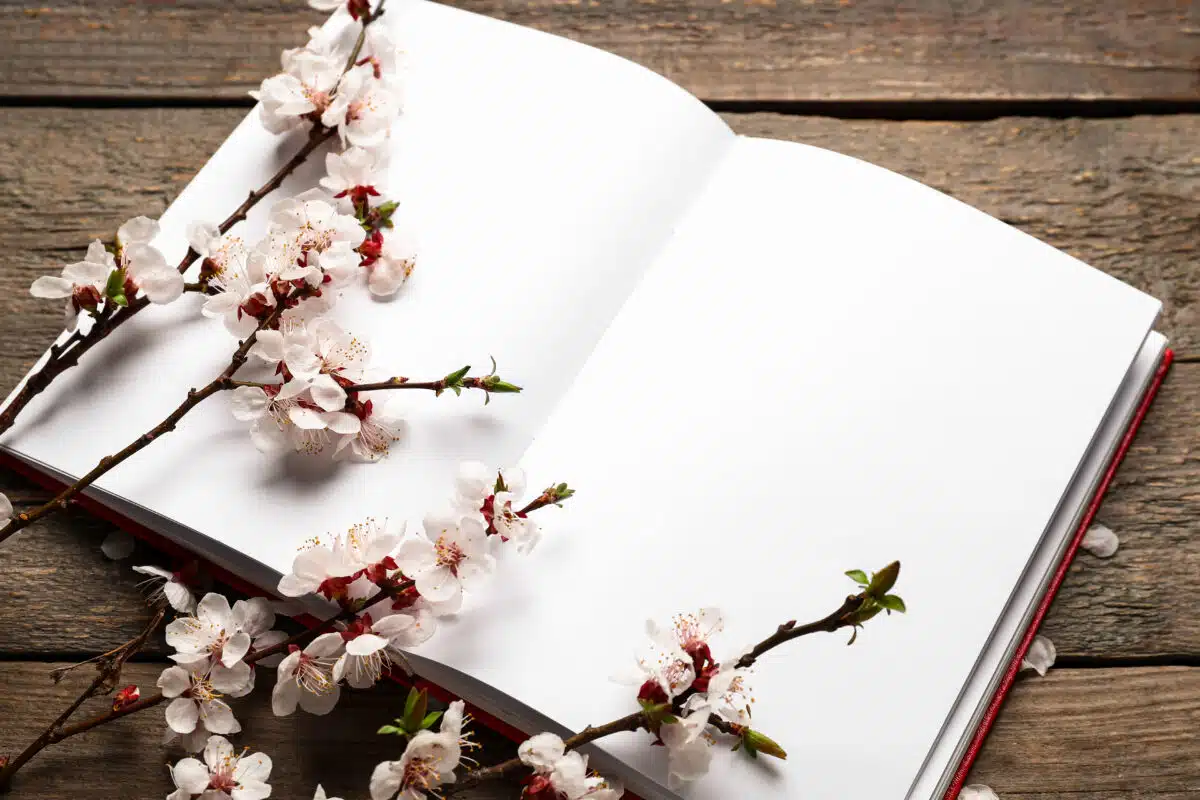Here’s what the Dansa poetry form is:
The dansa is a poem from the Old Occipital language, first introduced by the 13th century troubadours of southern France.
It utilizes a quintain followed by multiple quatrains, repeating a refrain at the end of every verse.
While originally lyric poetry, modern interpretations of the form often lack any definite meter.
So if you want to learn all about the Dansa poetry type, then you’ve come to the right place.
Let’s get into it!
- Rondelet Poetry Form: Charm in Repetition
- Lai Poetry Form: Unveil Heart’s Whispers
- Triolet Poetry Form: Delight in Refrain’s Charm
- Ballad Poetry Form: Evoke Sentimental Rhythms

Forms of Poetry: The Dansa

The dansa is an Occitan form (meaning it’s from a region right at the border of France and Spain).
It features no particular meter, though it does utilize refrains and rhyme scheme.
The most credible English source depicting dansas is Robin Skelton’s The Shape of Our Singing, and much of the documentation written in English can be traced back to Skelton’s work.
While Occitan is most noteworthy for being the language of Catalonia in the modern era, the dansa is actually a French form.
It can be traced back to the troubadours of southern France.
Basic Properties of a Danza

| Rhyme Structure | Strict; uses refrains |
| Meter | None |
| Origins | Catalonia and France |
| Popularity | Rarely used in English |
| Theme | Varies |
How Are Dansas Structured?

Dansas feature on opening quintain (a stanza with five lines) that is then uniquely followed by as many quatrains as desired by the writer.
This makes them unusual in that most forms with a variable length will feature some sort of concrete symmetry across sections, whereas the dansa expects the first stanza to be noticeably different from the remainder of the poem.
A refrain is heavily featured, appearing twice in the cinquain (as both the first and last line) and then again as the ending line of every single quatrain throughout the poem.
Since the poem will keep cycling back to this line, it’s heavily recommended that the poet put their best effort into this particular line.

The rhyme scheme of the initial quintain is AbbaA, while the quatrains all have a rhyme scheme of bbaA.
One easy way to remember this is to note that all of the quatrains are ultimately a set of rhymed couplets, with the second couplet ending in the refrain.
The opening quintain is really just an extension of the quatrain form, with one additional refrain at the beginning.
The original dansas were written as lyric poetry, so it’s likely that there was more emphasis on syllable count and meter in the original form.
Example of a Dansa

My Shadow Chases Me
My shadow chases me everywhere.
I do not mind his presence though
as he’s the nearest friend I know.
I think he probably really cares.
My shadow chases me everywhere.
Wherever I may ever go
he’s right behind me, blow for blow.
He likes to linger on the stairs.
My shadow chases me everywhere.
I continue to change and grow,
dressed up nice from head to toe.
He is instead just dark and bare.
My shadow chases me everywhere.
His expressions will never ever show
and I wonder if he’s friend or foe.
He’s both brother and nightmare.
My shadow chases me everywhere.
Faceless, featureless, black as a crow.
Always, always following in tow.
I’ve started to fear his eyeless stare.
My shadow chases me everywhere.

The above poem showcases some of the basic features of a dansa.
The most prominent feature of a dansa is easily the refrain, and this poem uses it to showcase a sort of obsessiveness in the speaker.
One way to empower the refrain is to write the poem in such a way that it takes on a different meaning within the context of the poem as time goes on.
In this case, the refrain itself is actually just a benign little sentence. “My shadow chases me everywhere.”
If you say it out of context, then it’s just an obviously true statement with no deeper meaning. But pay attention to how it’s used within the confines of the featured poem.
At the beginning, the refrain sounds more playful than anything else.
The speaker sounds like a small child, happily recounting his memories of playing alongside his shadow.
This is helped along by the simple rhymes that make it sound almost like a nursery rhyme.

It’s not until later in the poem that a darker view of the titular shadow starts to surface.
The pleasantry of having a friend with you at all times gives way to the paranoia of feeling like you’re being watched at all times by a faceless, featureless entity.
In this way the refrain achieves a new meaning.
The word “chases” suddenly seems much more ominous, and the structure of the dansa enhances this effect by reinforcing the notion that the shadow will always come back at the end of the next stanza, just as the speaker is always chased by their shadow.
This poem is a good example of how you can use the natural features of a form to breathe life into the content of the poem.
This poem isn’t just a dansa for the sake of being a dansa.
It was carefully constructed to be a poem that only works as a dansa, taking advantage of the inherent properties of the chosen form.
Tips for Writing a Dansa

Make sure the refrain is a strong line.
By definition of the form, the refrain will be the first and last line of the entire poem, the most common line throughout the poem, and the ending of every single stanza.
With such a heavily overworked line, you want to make sure that it’s something worth going back to repeatedly.
One way to do this is to set the refrain as your throughline or focus.
Think of the refrain as the central statement of the poem, with most of the poem existing to come back to that statement from different angles.
Naturally there are other ways to go about it, but this is one tangible solution to the structure.
A commonly accepted feature of refrains in English poetry is that the poet can make small permutations to the refrain here and there in order to make it work grammatically or to tweak the meaning ever so slightly.
Whether you choose to use a strict refrain or decide that some variation is acceptable is up to you, but just be aware that the option is there, should you need it.
Try to choose relatively easy end sounds.
The entirety of the poem will only feature two end sounds, so the importance of their simplicity really shines as you lengthen the poem.

Short words like “cat” and “sky” tend to be easier to find rhymes for, but words with common suffixes can also work wonders.
One blessing of the form is that it’s remarkably flexible outside of specifically the rhyme scheme.
Since the poem has no preestablished meter or length, you can decide for yourself how to handle these.
My honest recommendation would be to keep the poem relatively short though, since it’s much easier to keep up the strict rhyme scheme for two to four stanzas than it is to keep finding matching rhymes for several pages.
Those who speak Romance languages may find the form much easier in those languages, since the conjugations featured in languages like French, Spanish, and Italian are much more consistent with their suffixes than English.
English is ultimately an amalgamation of the original Germanic Old English and heavy French influences, so it tends to have relatively inconsistent suffixes.
Poet’s Note

It should be noted that most of the online sources available specifically cited Skelton’s description of a dansa.
While Skelton was a well-respected and well-educated professional, it should be remembered that there are some inherent drawbacks to having so many sources focus on one man’s work.
If there were any misinterpretations in Skelton’s definition, however minor, then they would have been repeated ad nauseam in the articles that cite The Shapes of Our Singing as if it were gospel, so please be aware of the possibility.
Comprehensive Collection of Poetry Forms: Craft Words Into Art

Dare to traverse the entire spectrum of poetic forms, from the commonplace to the extraordinary?
Venture from the quintessential Sonnet to the elusive Mistress Bradstreet stanza, right through to the daunting complexity of Cro Cumaisc Etir Casbairdni Ocus Lethrannaigecht.
For those with a zeal to encounter the full breadth of poetry’s forms, this invitation is yours.
Start exploring the vast universe of poetic ingenuity with our comprehensive array of poetry forms right now!
